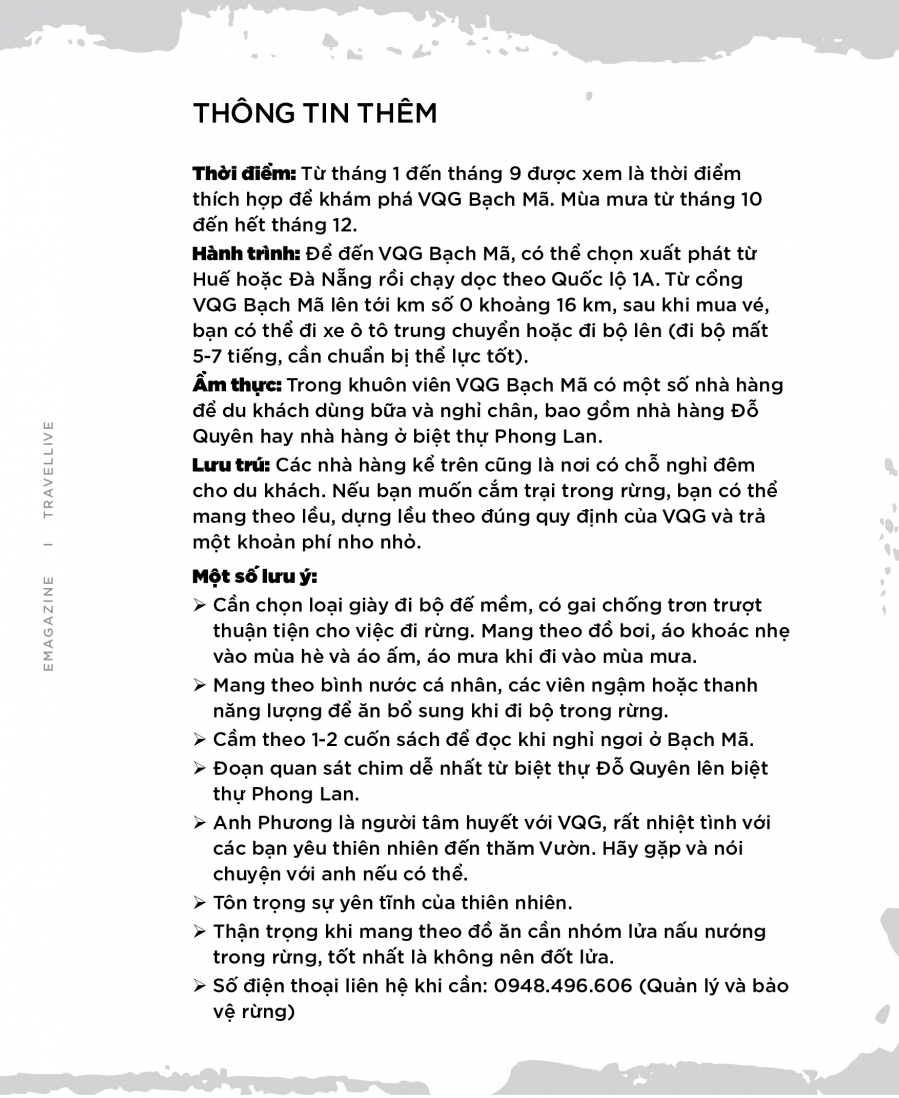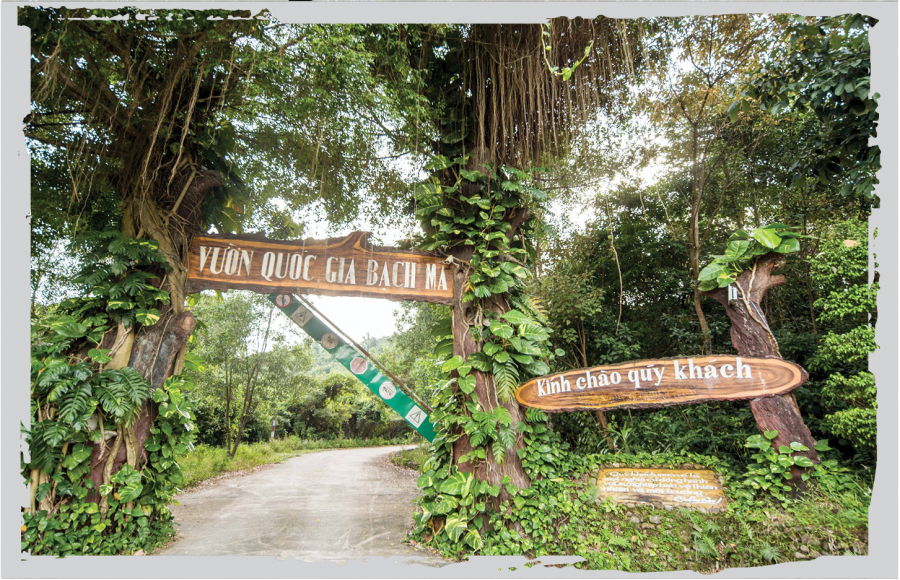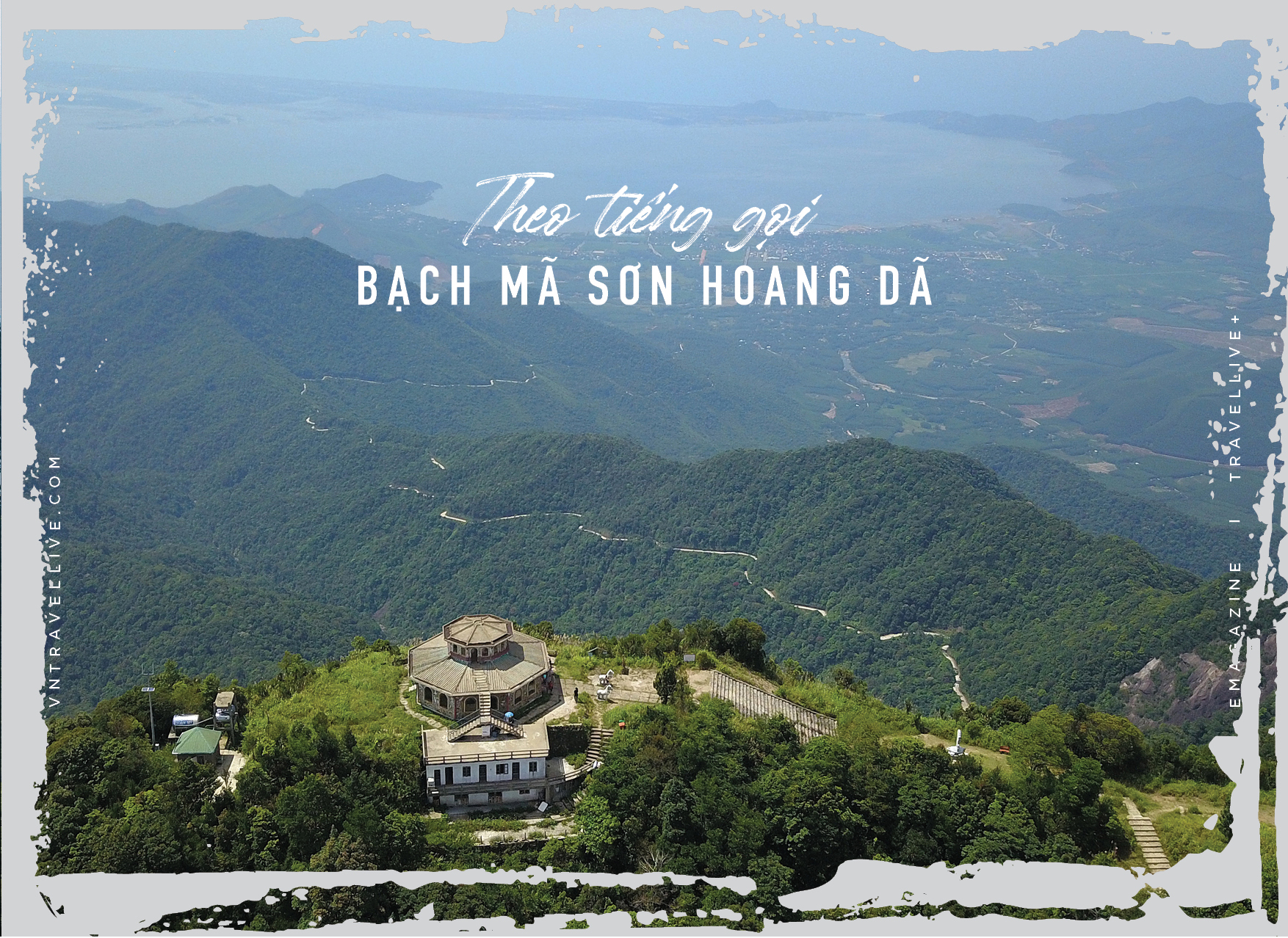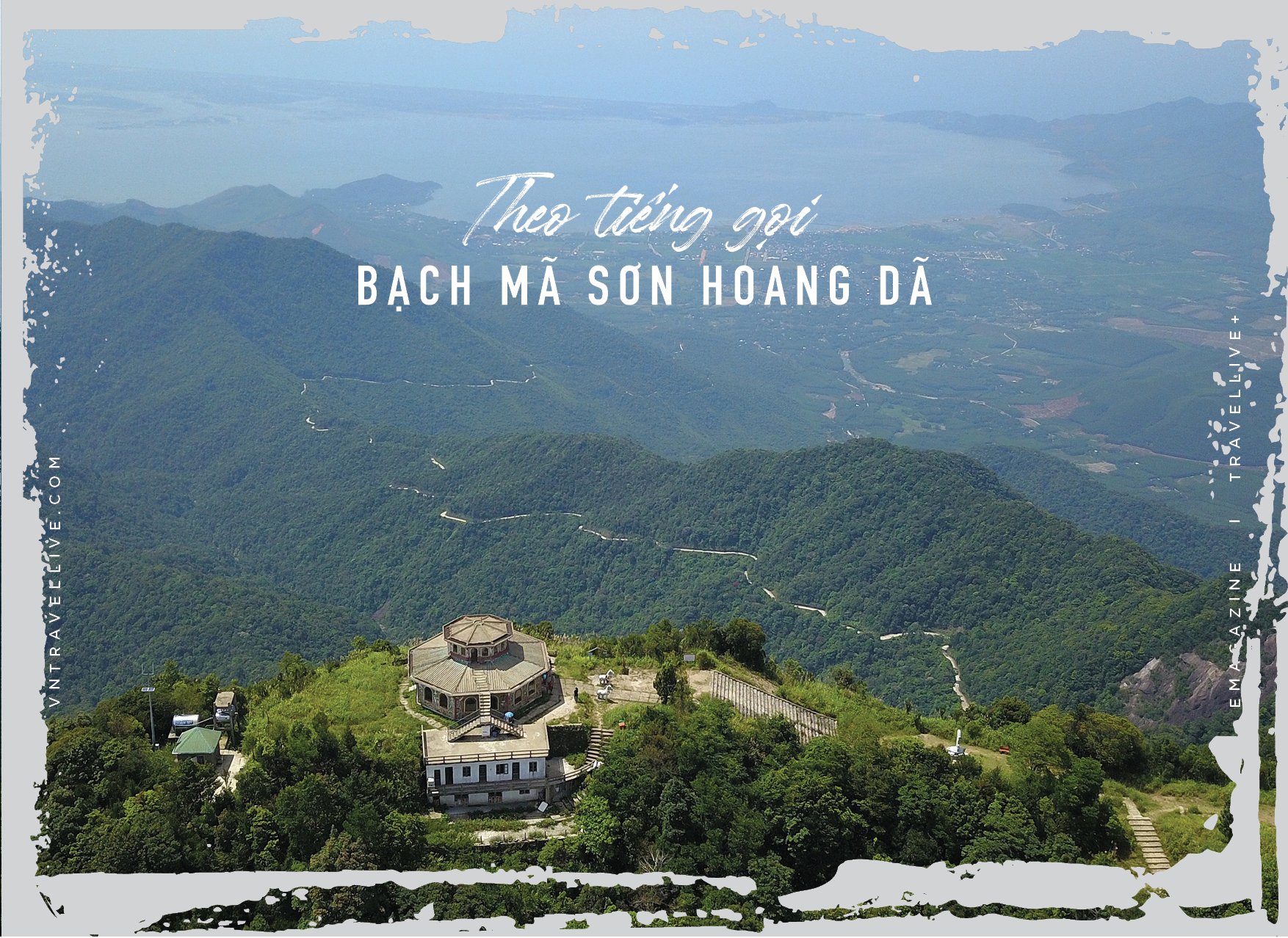Hieu, my younger brother who went to Bach Ma on our previous cross-country trip, now working in the South, called me one summer morning complaining that he “missed the mountain”. And I was easily moved when someone wanted to go to Bach Ma – my mountain.
Located about 40 km south of Hue city center along the Thien Ly road, Bach Ma National Park (VQG) is one of the places loved by wildlife enthusiasts, as people in the 30s and 40s of the last century confided through their essays or the captions in the photos taken. When the French were in Vietnam before, to avoid the heat of the tropical country in the summer, they built resorts and sanatoriums with the common feature of being located on high mountains. Those are Da Lat, Sa Pa, Tam Dao, Ba Na and Bach Ma. Particularly, Ba Na and Bach Ma, in addition to being located on high mountains, are also close to the sea.
But Bach Ma is more unique because between the ocean and the mountains and forests is Tam Giang lagoon. The salt vapor from the ocean is "diminished" thanks to Tam Giang lagoon "absorbing" some of it before blowing up to Bach Ma mountains and forests, therefore, the ideal climate here becomes a place for many species of birds, animals and plants to choose to live and grow.
And thanks to that, people also have a place to blend into pure nature, have the opportunity to love nature more, to understand nature more, to appreciate nature more. I am lucky, to be the one who has the chance to receive that opportunity. And I always open my heart to share that chance with those who have the chance to go to Bach Ma with me.
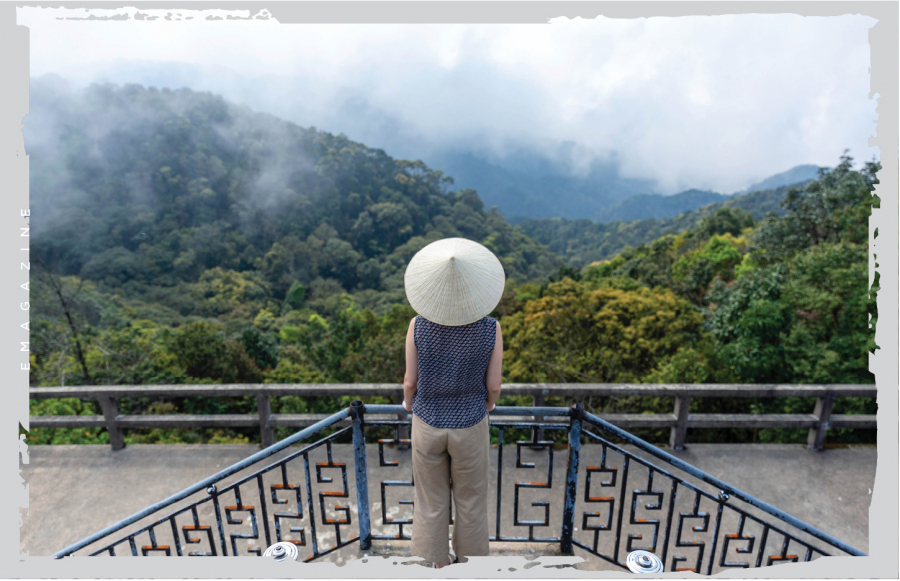

Going back in time, the beauty of Bach Ma mountain was discovered by Mr. Raoul Desmarets, a civil engineer of Thua Thien sub-region, together with Mr. Graffeuil, the Resident General of Annam. Both of them dreamed of building a resort worthy of its stature for Hue, the capital of Annam. In 1933, Mr. Desmarets conducted research to build a village on the rocky mountains of Bach Ma. He was the first person to build a wooden hut - where he stayed during the days when he came to supervise the first planning works to build the resort. Architect Raoul Desmarets was also the one who designed the Freedom Stadium in Hue (1932).
Many wooden structures on the mountain top were formed accordingly. The number of these houses increased continuously, up to 139 houses and villas made of wood or stone, by 1945. By March 1945, the day the Japanese army occupied and the French left this place, Bach Ma fell into oblivion.
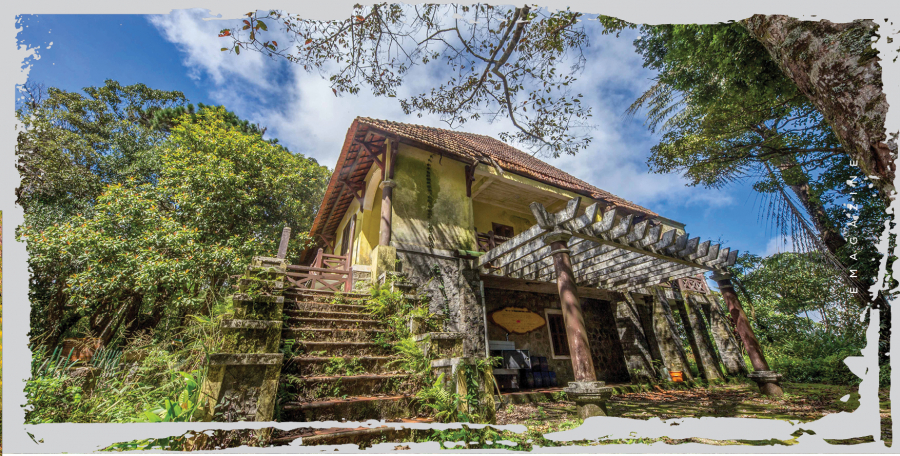
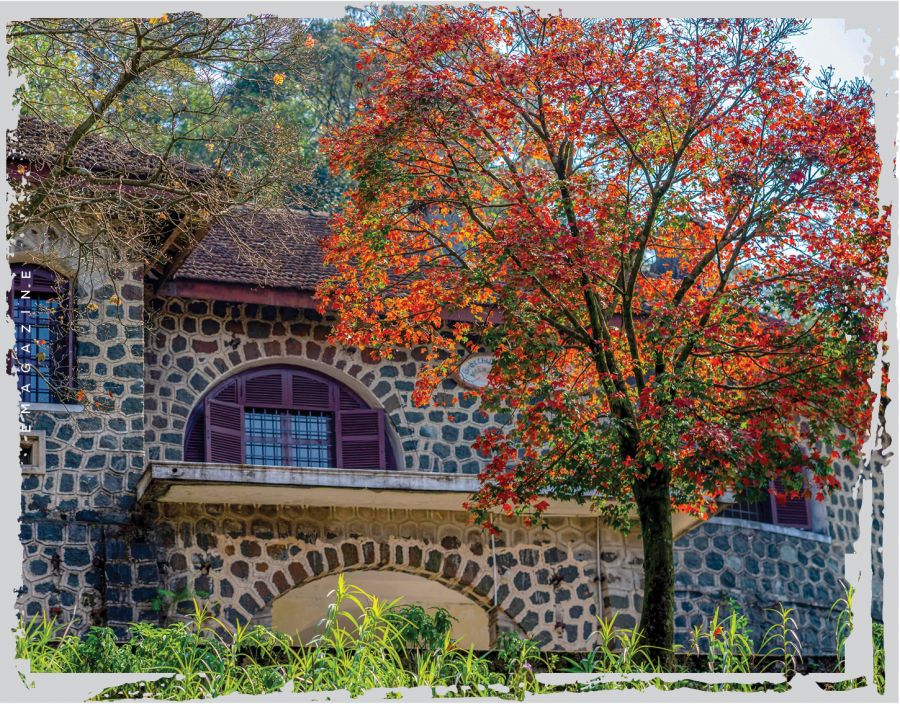

In 1986, the Bach Ma Nature Reserve was established. In 1991, Bach Ma National Park was established. After the expansion in 2008, Bach Ma National Park increased its area to nearly 40 thousand hectares, famous for its biodiversity resources with many rare species of animals and plants, and is one of the important "green lungs" of the Central region of Vietnam. This place is also one of the rare resorts that was once loved by the French and still preserves many of the most pristine natural beauties.

As scheduled, Hieu flew from Saigon to Hue. At the same time, two of my colleagues from Hanoi also wanted to go to Bach Ma to survey the tour route, so I invited them to join the group. We agreed to ride motorbikes to see more of the scenery along the way.
After breakfast and coffee for the newcomers to get acquainted, the four of us on two motorbikes, drove along the country road and Tam Giang lagoon instead of taking the National Highway, to Bach Ma. After nearly 3 hours of driving along the southern side of Tam Giang lagoon, in the early afternoon, we arrived at the Visitor Reception Center of Bach Ma National Park.

To get to the top of the mountain, you can go by car or on foot, our choice is the car. The road up to Bach Ma mountain has long been famous for its steep slopes and winding curves.
Anh Viet - the shuttle driver of the National Park that I often travel with - smiles and welcomes the group. Anh Viet knows every corner and every slope from the foot of the mountain to near the top, so he always makes me feel secure when explaining to my fellow travelers on the bus. On that dangerous road of more than 15 kilometers, the scenery below gradually reveals itself as the altitude increases and visitors will begin to be interested in the majesty of Bach Ma mountain forest.
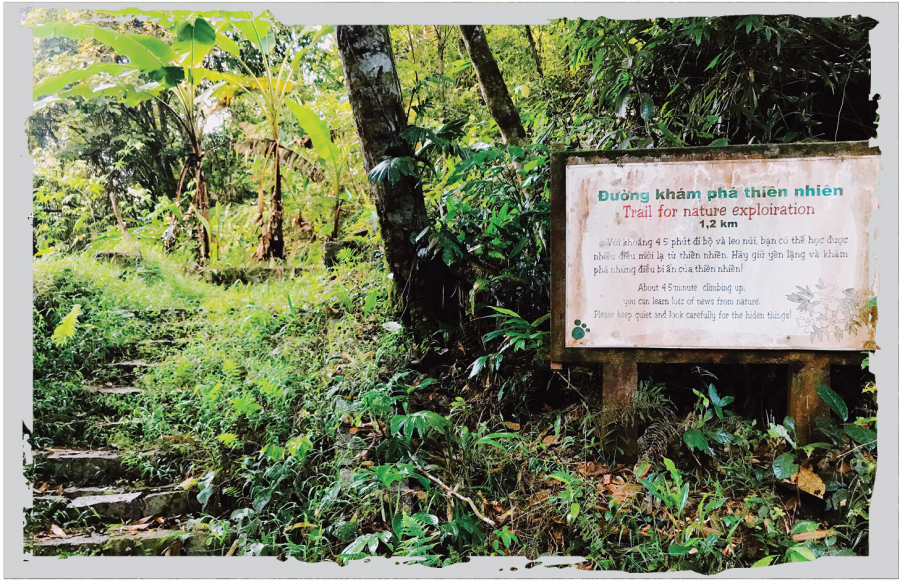
Nearly an hour later, arriving at Do Quyen restaurant, I told Viet to cut off the main road and take my fellow hikers along the “nature trail”, which was more dangerous but would give us the chance to meet more “natural friends”. Hieu, who had gone to Bach Ma with me the previous time, had reached the top via the main road, so of course he was eager to experience this new trail.
Passing through the orchid collection garden, the group encountered a steep slope that made everyone gasp for breath after climbing half of it. I told everyone to limit their talking, only whispering when necessary to keep quiet so that the “natural friends” could appear.

As I expected, when the group was resting, we saw a large black squirrel swinging from branch to branch right above our heads. The large black squirrel (scientific name is Ratufa bicolor) has a body as big as an adult cat but longer thanks to its beautiful long black tail that helps maintain balance when moving at high altitudes. From head to tail, they are about 1 meter long, covered in black, but the part from the cheek extending past the ear to the belly and the front of the two front legs is a beautiful milky yellow color. They have strong claws that help them grip the tree trunk while moving to find food. The large black squirrel is usually active during the day, in tall trees, but sometimes climbs down to the forest canopy to forage on the ground. Its main food is nuts, pine cones, fruits and leaves. The large black squirrel is mainly solitary and prefers wild forests. In 2009, this species was included in the IUCN Red List (International Union for Conservation of Nature and Natural Resources).
We were silent, just standing there watching our friend with black and yellow wings swing from branch to branch, sometimes jumping long in the air, very skillfully and proficiently.
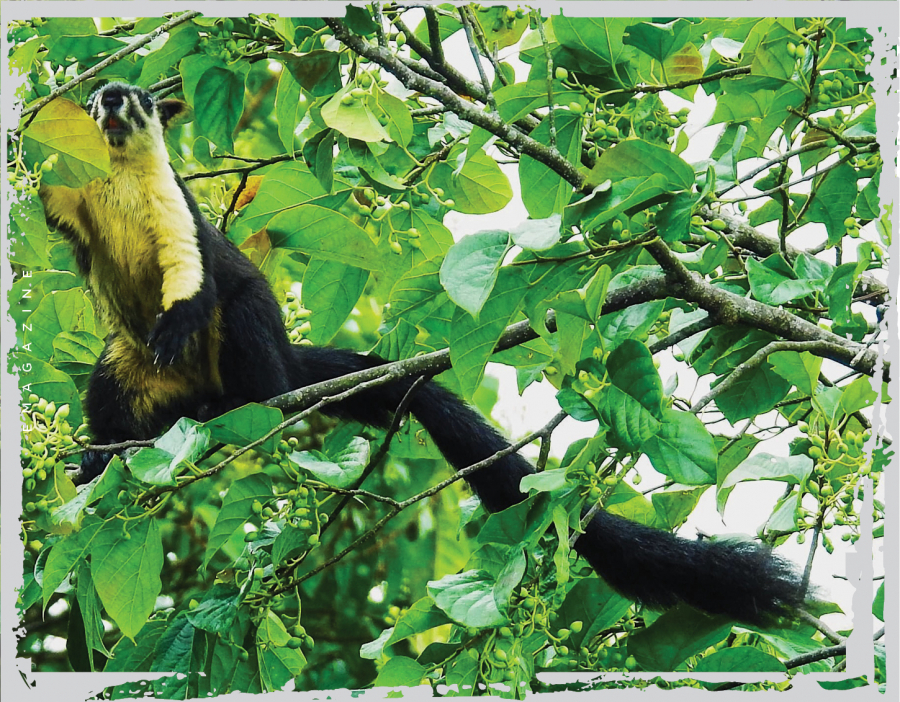
Our group continued to move upwards, where there were a few old villas left from the 40s of the last century. The traces of time still left the traveler with nostalgic feelings about the past of this place through the walls or chimneys of the villas under construction or destroyed by war.

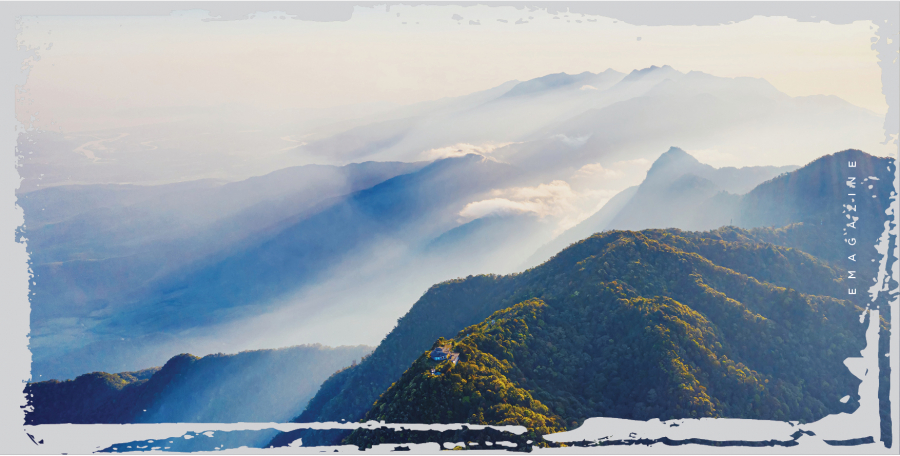
After nearly an hour of walking, we reached Hai Vong Dai, located at an altitude of over 1,400 m, one of the highest points on the summit for sightseeing, a favorite place to watch the sunset for anyone coming to Bach Ma. From here, the panoramic view of Bach Ma mountains and forests appears majestic, open and pure.

Far away towards the sea is Cau Hai lagoon - located in the Tam Giang lagoon system, the largest brackish water lagoon system in Southeast Asia with abundant seafood resources - which has provided livelihood for generations for an area stretching approximately 70 km from North to South along the Thua Thien coast. On beautiful days like that day, people with sharp eyes can even see the traces of traps and flutes, which are fishing tools of the people in the hydroelectric area, spread across the surface of the lagoon. From above, we can also clearly see the intersection of Tam Giang lagoon to the sea, which is Tu Hien estuary where our group drove past at noon.
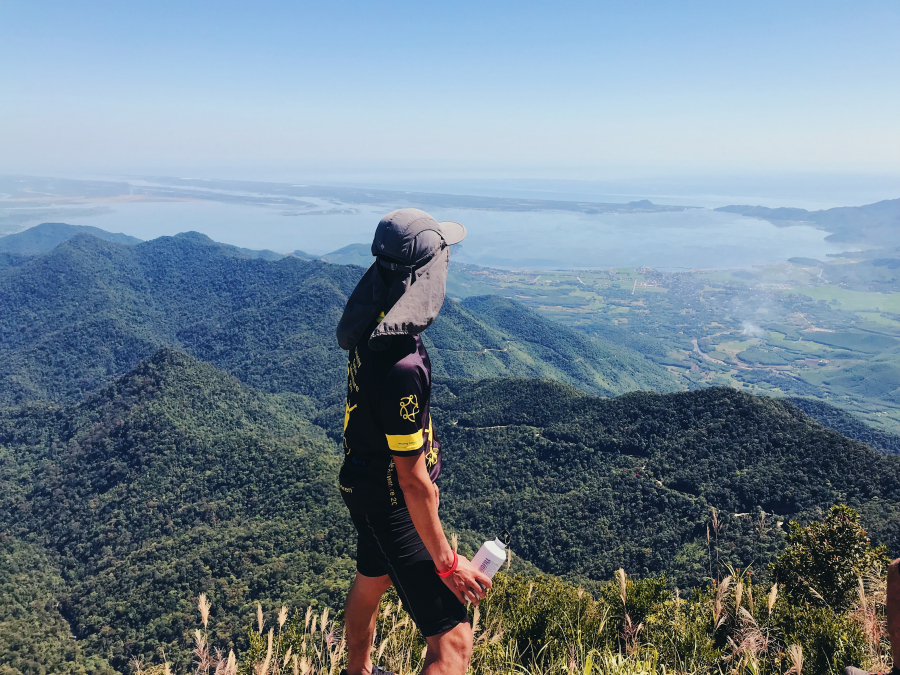
Right where the sun sets, slightly to the right, is Truoi Lake - the lake that provides fresh water for the entire Truoi region with the famous song: "Troi land has sweet jackfruit, fragrant strawberries/You went to be a son-in-law, stayed for a long time and never returned". The sweetness of the lake water is probably partly due to the fresh stream flowing from Bach Ma mountain.
I showed the group the remnants of the helicopter landing pad and shared some information about the soldiers who were stationed there during the war; in the distance were Hai Mountain, Mang Mountain and of course Bach Ma Peak, lying side by side, creating a majestic mountain landscape.
Everyone took the opportunity to take some souvenir photos together. I brought out a pot of good tea and invited everyone to drink. The air was fresh and the aroma of tea wafted into everyone’s noses, making everyone inhale.

The afternoon air was cooler, the clouds followed the wind blowing from the sea, hovering over the surrounding mountains. Perhaps because the shape of the clouds was like white horses, that was why the mountain was named Bach Ma? In response, my three companions just nodded, their eyes looking out at the vast landscape ahead. Everyone wanted to keep the wild peace at this moment, as if if they spoke out loud, the wind would blow it away. Without needing to utter a word, those looks expressed all their longing.
The afternoon sun cast golden rays shimmering like wild honey, bringing the sunset to the clouds and wind, swirling together. In the midst of that brilliant scene, we could only be silent to enjoy, to let ourselves be immersed in the wild nature, very liberal but also very poetic.
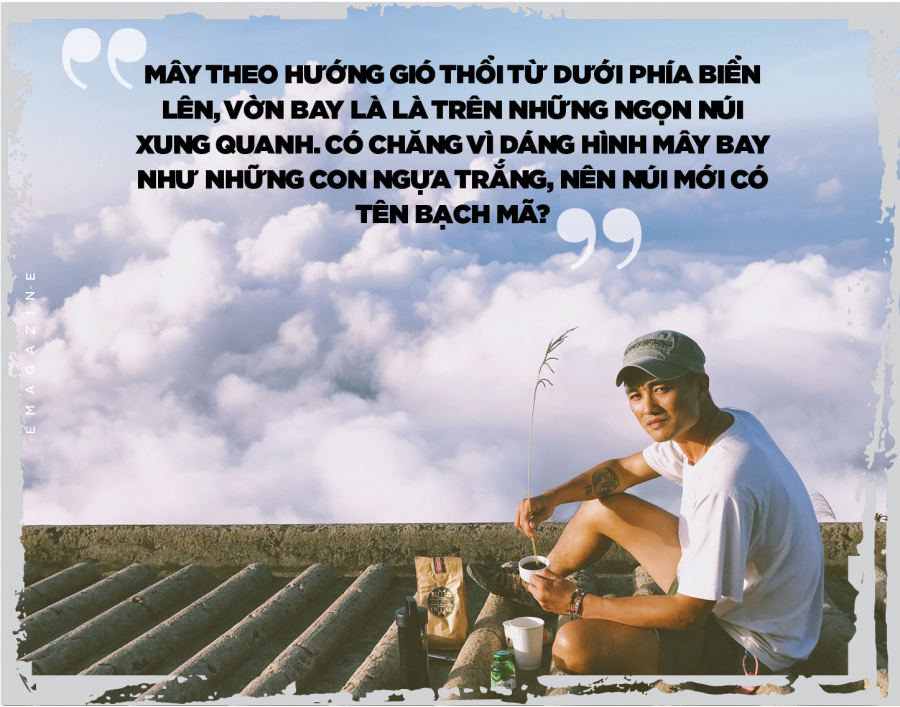
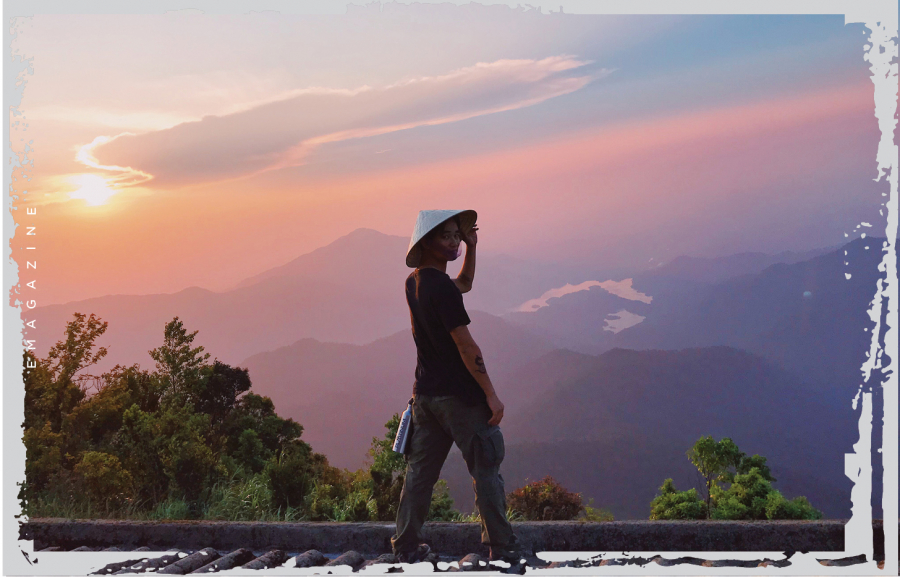
The sun was slowly sinking towards the horizon as we prepared to go down. The temperature was around 20-23 degrees.oC (compared to under city is 35-37)oC). The brothers stood up and exclaimed: "Heaven is here! Fairyland is here!".
On the way down, the sound of birds calling their friends in the afternoon sounded very lingering. I also heard the sound of a group of red-shanked douc langurs swinging from branch to branch back to their sleeping place (which was chosen by the leader every night). “We can see them again tomorrow morning!” - I told my friends so they wouldn’t regret not seeing this special primate.
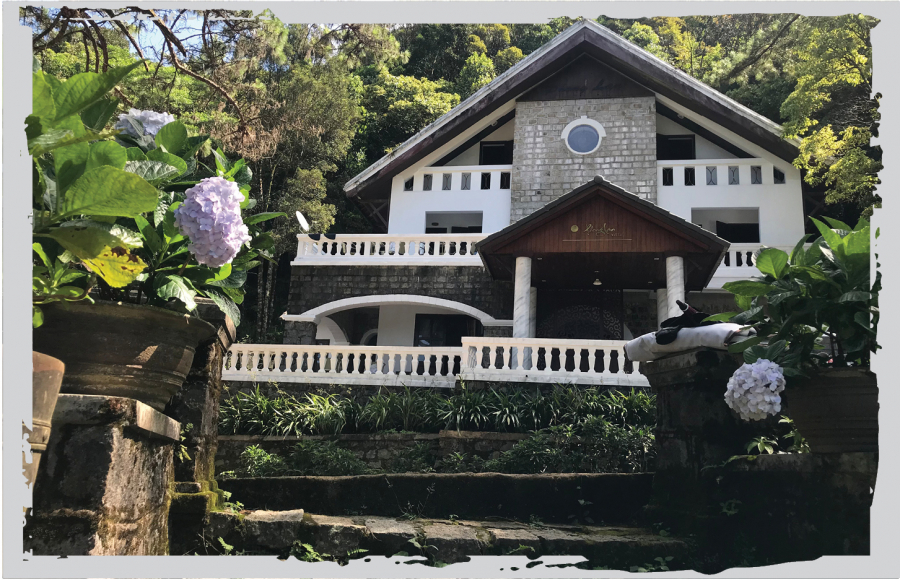
At km 0, Mr. Viet picked us up and took us to Kim Giao villa - where we stayed for the night. This is one of the accommodations in the National Park that currently serves tourists when staying overnight on Bach Ma. The facilities are very basic, with hot water and soft mattresses, which is enough for sleeping in a mountainous landscape like Bach Ma. Perhaps, thanks to that simplicity, the number of guests staying at Bach Ma is not crowded so that the quiet at night is still present - the quiet that anyone who loves wild nature has in them and wants to preserve in response to the generosity of Mother Nature. The scene that my brother and I enjoyed this afternoon is one of those gifts.
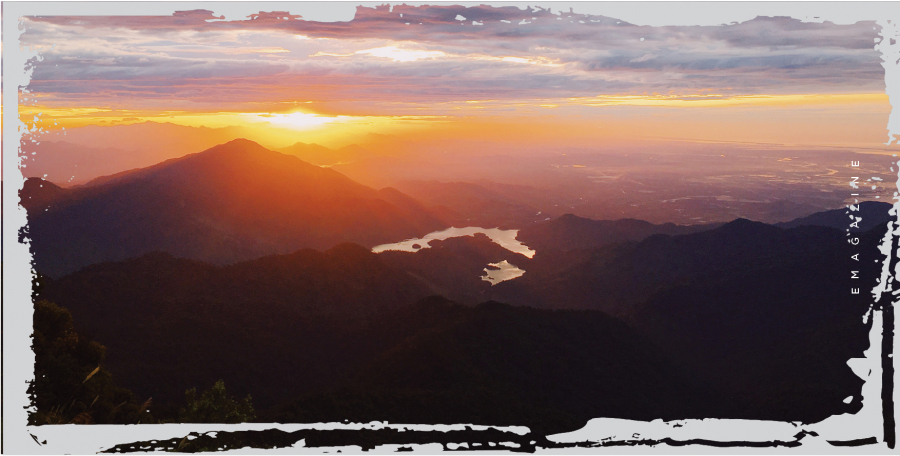

We had dinner at Do Quyen restaurant, which was a dance floor in Bach Ma in the late 1930s and early 1940s. When tourism developed again later, the building was renovated based on the existing architecture to serve food and drink to tourists when going to Bach Ma.
I have made many new friends, people who love nature through the night exchanges and meetings here. Mr. Phuong - our dinner server, is one of those friends.

He used to work as a ranger at the National Park, and later when the tourism services in the park developed, he switched to serving tourists: from cooking, waiting tables, cleaning rooms to being a tour guide, a photographer - he did it all. He once told me that if he did that, he would be able to stay on Bach Ma more, to meet more people who love wild nature who come here, so that he could have the opportunity to share his love of nature and of course receive sympathy from those travelers. Over 20 years working at Bach Ma, he spent more time with the mountains and forests than at home, even though his house is right below the town at the foot of the mountain. He is one of the living dictionaries about Bach Ma that I will think of first when needed.
After dinner with some friends, I invited the whole group to go out and watch the stars. The summer night sky on the mountain is very beautiful, clear and cloudless, so you can see the sky full of stars and twinkling. Not everyone gets to see such scenes, especially on a high mountain like this.
Not wanting to miss the sunrise early in the morning, we went to bed as the Scorpio constellation was high in the sky.
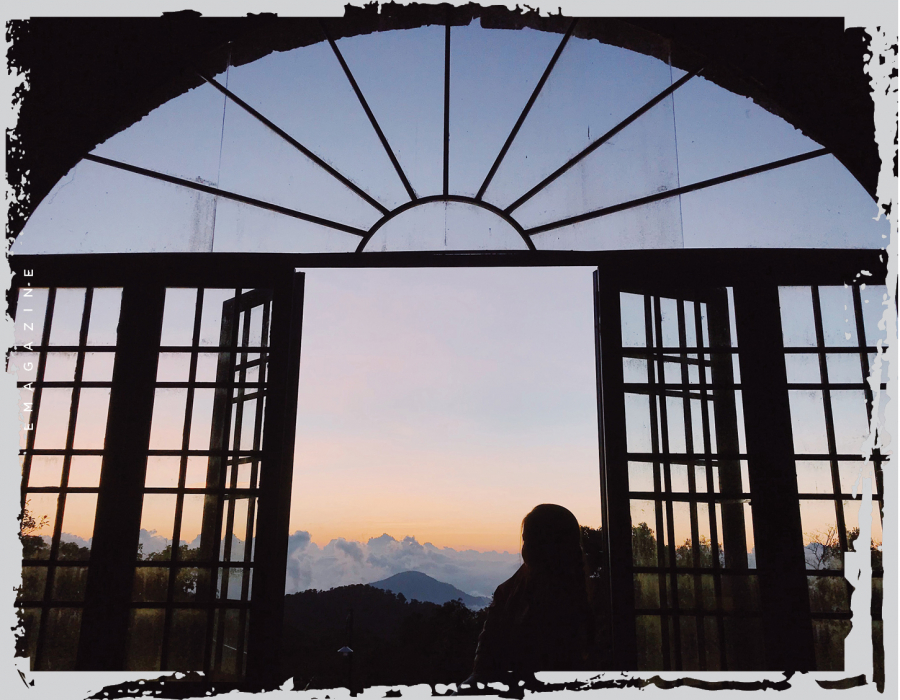

It was still early morning when I woke the group up. After warming up, we turned on our flashlights, took the hot coffee I had made before going to bed last night and some cakes, and walked to the viewing point. About 30 minutes later, the group arrived at Bach Ma Post Office, where we could watch the sunrise. The sky before sunrise is always beautiful. The sound of cicadas, the chirping of early birds, and the crowing of jungle fowls blended together like a chorus of many high and low notes against the backdrop of the sky with the beautiful colors of the clouds changing every moment. In the distance, from the direction of the sea, on the horizon, the sun, like a glowing ember, began to rise. That beautiful moment was captured admiringly by the whole group with their cameras. Trang, a friend in the group, also took some very "virtual" pictures. The early morning scene in the morning sunlight gradually appeared, clear and peaceful. Hieu took the opportunity to look up and take a deep breath of the air swirling before his eyes, letting the sunlight shower his face with "nutritious" rays (as Hieu said), something that no longer existed in the city where Hieu lived.
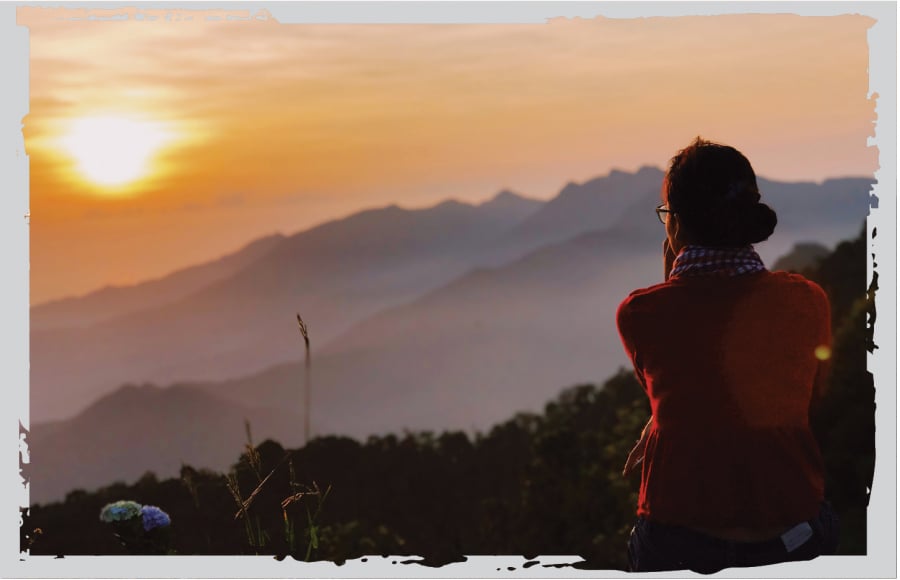
Not far from Kim Giao villa, there is a watchtower, from which you can observe the forest patches up close. In one corner, behind some tall trees in those forest patches, less than 1 km away from where we were standing, I knew my big friends were having a “meeting” there. Indeed, when I blinked, I saw some of them swinging on the treetops. That was one of the groups of five-colored langurs currently residing in Bach Ma National Park.
With its characteristic 5 colors, the Five-colored Langur (also known as the Red-shanked Douc Langur) is honored by the International Wildlife Conservation Organization as the "queen" of primates residing in the deep forest because of its unusual beauty. This species is listed in group IIB at the endangered level in the Vietnam Red Book, and the World Conservation Organization has listed it as an animal species that needs unconditional protection.
The five-colored langur does not travel alone but usually lives in herds, in families. They eat and sleep in trees. Their food is also very rich, mostly leaves and fruits. In Vietnam, the number of individuals of this species accounts for 83% of the number of langurs in the world, with about 600 individuals, concentrated mainly in Son Tra Nature Reserve (Da Nang); in Bach Ma National Park alone, there are about 5-6 groups with a density of 5-10 individuals/group.
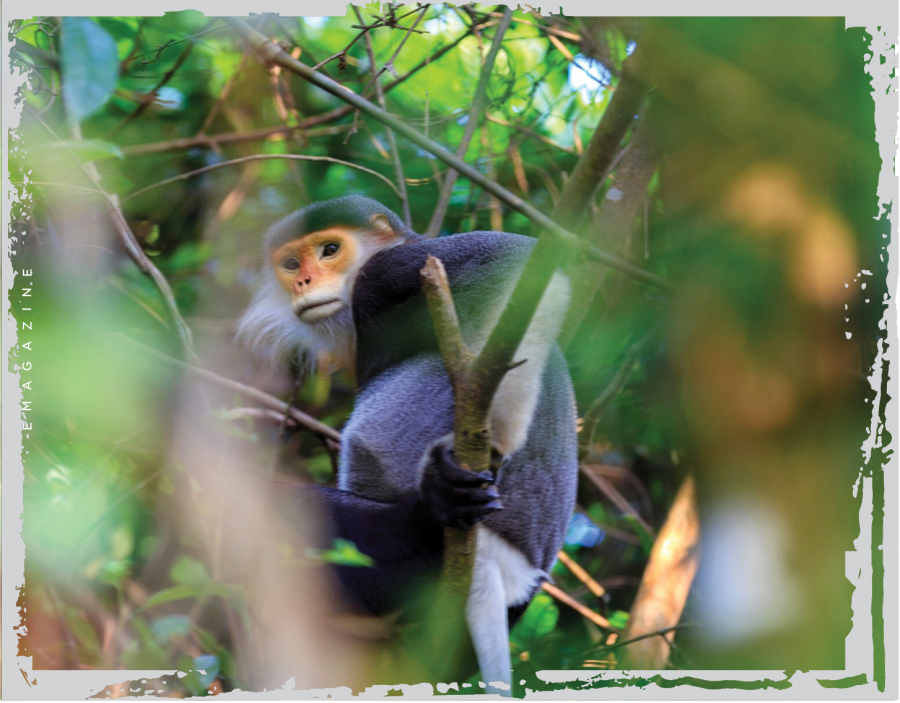
After an exciting get-to-know-you session with the Langurs from afar, we returned to our room to pack up and check out. The group would trek through the forest along the Ngu Ho trail to Do Quyen waterfall - one of the famous beautiful spots in the Park - before meeting Viet again on the main road.
The route along the Five Lakes route will pass through 5 lakes, which are clear, cool lakes where you can swim or bathe to cool off while conquering the dangerous road on this route.
After more than an hour of walking, we arrived at the top of Do Quyen waterfall. The majestic view from the top of the waterfall made the whole group feel like they were re-energized after the journey through the Five Lakes. From the top to the foot of the waterfall, approximately 300 meters high, Do Quyen waterfall splashed white water rolling down the cliff like a white silk strip floating on the green forest, very spectacular. The waterfall was named after the rhododendron flowers growing around it, blooming bright red every spring.
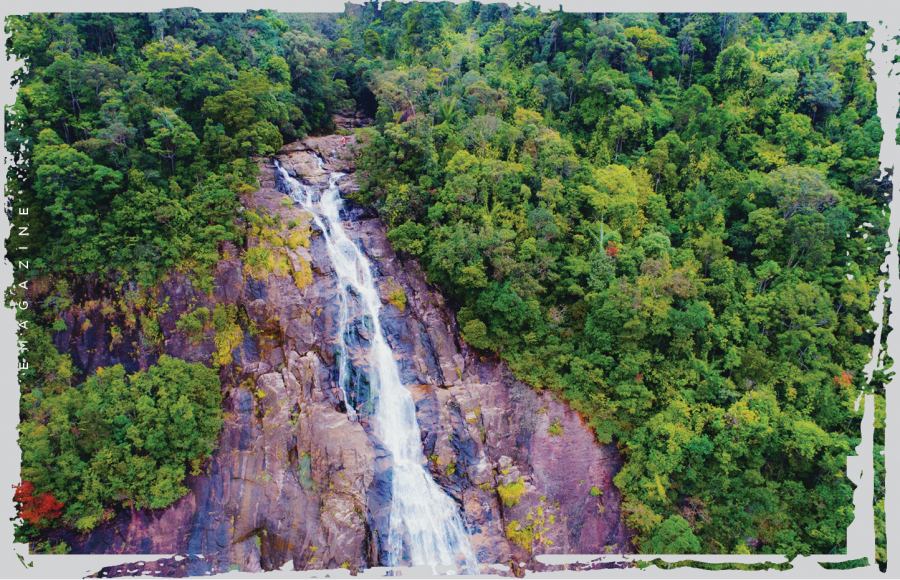
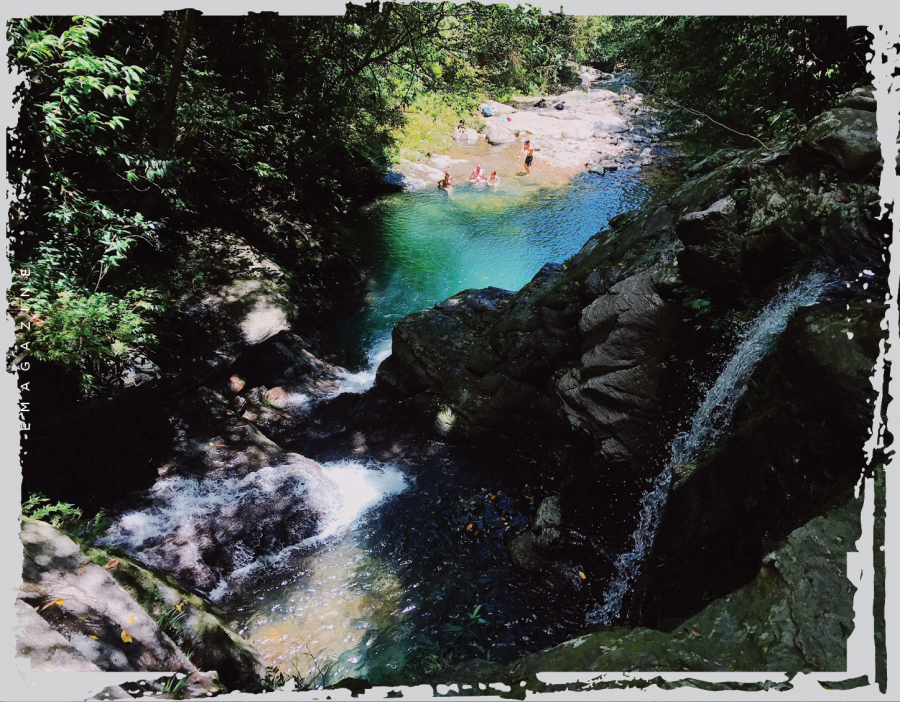
After resting, Hieu and I took the opportunity to bathe in the stream water that had stagnated and formed a small lake right at the top of the waterfall. The two girls also took off their shoes and socks, dipping their feet in the cool stream to relax in the murmuring water. It seemed like everyone was immersing themselves in Bach Ma, letting nature here treat them to the freshest, purest things in the most natural way. And thanks to that, I believe that the love of nature also comes in the purest way to my companions, just like the way I felt from the first time I met Bach Ma more than 15 years ago.
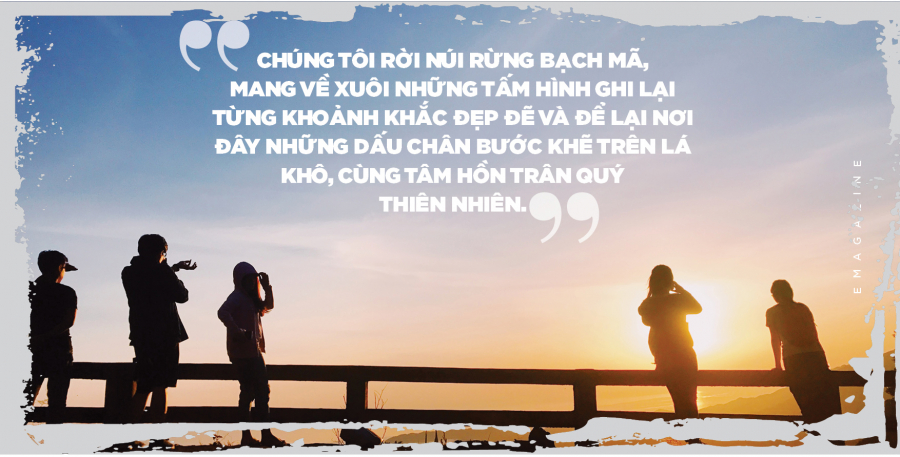
Leaving Do Quyen waterfall, we walked for another 30 minutes to reach the main road. Mr. Viet's car was waiting there, slowly taking the group down the mountain, leaving behind the landscapes that, after just over a day of wandering, had left many memories for the souls who were easily moved by nature that I had the chance to match.
We left Bach Ma mountain and forest, brought back pictures capturing every beautiful moment in Bach Ma and left behind in Bach Ma footprints on dry leaves and a soul that cherished nature. Bach Ma is where my love for wild nature began, and it could be yours too.
